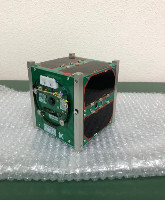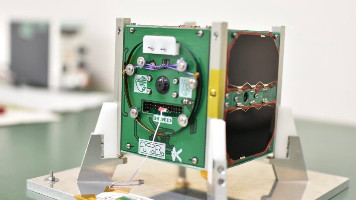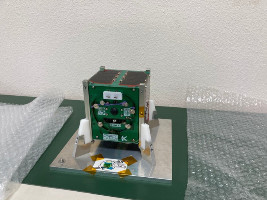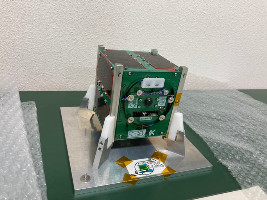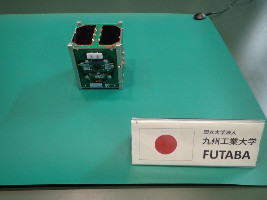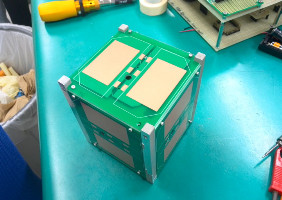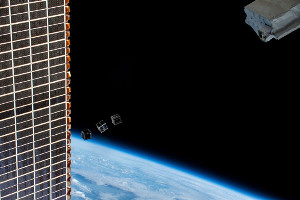| Name |
FUTABA |
| Form factor |
CubeSat |
| Units or mass |
1U |
| Status |
Reentry 2023-02-16. Was operational (Seems to be operational based on official Kyutech Twitter feed and SatNOGS reports as of 2022-12-20) |
| Launched |
2022-07-15 |
| NORAD ID |
53463 |
| Deployer |
J-SSOD (JEM Small Satellite Orbital Deployer) |
| Launcher |
Falcon 9 (CRS-25) |
| Deployment |
Deployed from ISS on 2022-08-12 |
| Entity name |
Kyushu Institute of Technology |
| Institution |
University |
| Entity |
Academic / Education |
| Nation |
Japan |
| Oneliner |
Educational mission observing Pb-Free solders and amateur radio payload.
|
| Description |
FUTABA has four missions:
- Observing the Pb-Free solders
- Three-axis attitude control with magnetic torquers
- Wireless communication experiment on 2.4GHz band
- Promoting the satellite development by amateur radio operators
Longer mission descriptions:
- What the solder extended slenderly on the circuit is called “whisker”. Pb-Free solder is used in the electrical equipment because of considering the health and environment. However, Pb solder is used in the space equipment because of endurance in the space environment where the difference between high temperature and low temperature is big. Therefore, we observe the Pb-Free solders on the orbit, and research the reliability of the Pb-Free solder. In this mission, the camera takes some pictures of Pb-Free solder. Please see the picture of the whisker.
- Magnetic torquers change the satellite attitude by using reaction between Electrical magnet and geomagnetic filed. When the satellite is released, Attitude Determination and Control Subsystem (ADCS) works to stop rotation of satellite induced at release. Attitude sensors determine the satellite attitude and the torquers control the attitude to face onboard camera to Earth.
- TWE-Lite is wireless communication element on 2.4GHz band, which is in the market. This mission exchanges the sensor data on the orbit for confirming the successful communication between the elements.
- We aim expanded usage of the amateur radio equipment as the satellite components. By now, the electrical equipment onboard the satellite is developed as space equipment. We can identify how long the equipment in the market can endure in the space by the observation of whiskers as the main mission. Therefore, the results can promote the amateur radio operators to build a satellite with the equipment in the market. It is important to publicize the mission results to amateur radio operators. We get the data (mission data, HK data and etc.) and some pictures from satellite by using Telemetry signal using amateur radio band. This satellite is developed in cooperation with junior and senior high school and local company, they are going to receive the signal with amateur radio.
|
| Sources |
[1] [2] [3] |
| Photo sources |
[1] [2] [3] [4] |
| On the same launch |
|
Last modified: 2023-06-03
